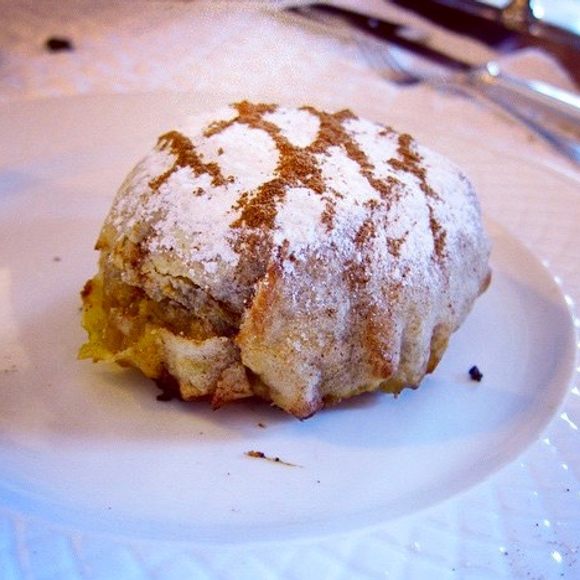In Morocco, you’ll find pastilla for sale around every corner. Upscale restaurants, casual cafes, and cheap bakeries all sell iterations of this flaky pie. Inside layers of extra-thin dough called warqa, tasters might unearth a savory seafood medley, sweet and nutty shredded chicken, or an aromatic layer of milky dessert custard. These styles grace menus across the country and appear at most Moroccan gatherings. But pastilla in its most traditional form, stuffed with pigeon, is becoming increasingly hard to find.
Authorities most closely associate the city of Fes with the birth of authentic pigeon pastilla, and the Spaniards, Berbers, and Sephardic Jews that ended up there are all thought to have influenced the sweet and savory staple. But dadas, female cooks hired by wealthy Moroccan families, were often the ones actually making the dish. These women fashioned the time-consuming dough and prepared the filling in three separate layers: ground almonds, stewed pigeons, and scrambled eggs. Once the pie was plated and latticed with powdered sugar and cinnamon, diners dug in, sucking meat from bone and tearing dough as they went.
Today, restaurant chefs prepare pigeon pastilla using boneless birds. They may assemble the pie in layers, or combine everything into one consistent filling. The filling is still rich, gamey pigeon meat, beaten eggs, and ground almonds, seasoned with onion, sugar, and spices. Both cinnamon and powdered sugar grace the top. To first-time tasters from abroad, the finished effect is akin to a gamey mincemeat pie mixed with almond baklava. There’s also just a hint of state fair decadence to it—likely from the crispy dough and liberal use of powdered sugar.
North Africans have raised pigeons for thousands of years. Deep within the old, walled cities around Morocco, families maintained pigeon coops that provided plump squabs, as well as excrement used in animal hide processing. Traditional Moroccan tanneries (which are tucked deep within the old cities) sometimes rely on the birds’ excrement to make a leather-softening solution. But demand for pigeon dishes and practices around “natural” leather-making has begun to decline. Chicken, on the other hand, became increasingly popular and readily available. You can find chicken pastilla just about anywhere in Morocco. That said, it’s worth it to track down the rare bird that’s become pigeon pastilla.
Where to Try It
-
Restaurant Douyria
Avenue Mohammed V, Ouarzazate, MoroccoThis traditional Moroccan restaurant offers pigeon pastilla and specialties such as camel and rabbit tagine.
Written By
 rachelrummel
rachelrummel
Sources
- www.cliffordawright.com/caw/food/entries/display.php/id/66/
- www.nytimes.com/2007/04/08/travel/08Fez.html
- www.196flavors.com/category/continent/africa/north-africa/morocco/
- www.cliffordawright.com/caw/recipes/display/recipe_id/798/
- explorepartsunknown.com/morocco/recipe-bstilla/
- www.saveur.com/article/recipes/moroccan-pigeon-pie-bstilla
- www.nationalgeographic.com/travel/intelligent-travel/2013/11/15/the-sweet-taste-of-pigeon-pie/















